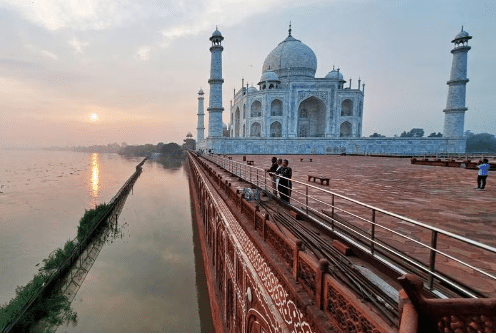In Agra, the Yamuna river swelled due to incessant monsoon rains, causing floodwater to reach the walls of Taj Mahal. This marked the first time in 45 years that the river had encroached upon the historic site. However, the mausoleum was designed to withstand such floods. The ASI confirmed that the basement housing the tombs of Shah Jahan and Mumtaz Mahal, remained unaffected.
However, other historical monuments in the area faced the brunt of the flooding. For instance, the tomb of Itimad-ud-Daula, the grandfather of Mumtaaz Mahal, was also flooded.
The ASI learned from past floods and protected the Taj Mahal from potential water damage. In 1978, flooding affected 22 basement rooms due to rising water levels. To prevent such occurrences in future, they removed doors that let water in and built walls at the entrance from the Basai and Dussehra ghats.
Meanwhile, the floods in Assam caused casualties and displaced thousands. The Brahmaputra River overflowed, submerging almost 450 villages in 17 districts. Moreover, Kaziranga National Park, which houses rare one-horned rhinos, was impacted too.
Amid the catastrophe, 85 relief camps were established across flooded districts, sheltering over 3,500 displaced people. While the water levels have started to recede, the situation remains challenging. With the wildlife in Kaziranga seeking refuge on roads and in human settlements.


